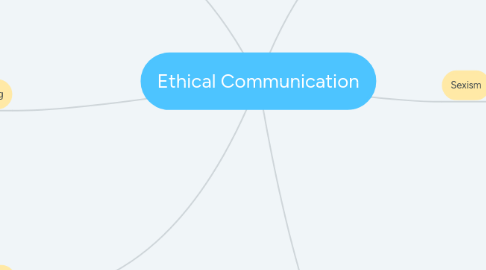Ethical Communication
by CHRISTINE DELA CRUZ


1. Disabilities
1.1. Be sensitive
1.2. Not defects but variation
2. Turn taking
2.1. One at a time
2.2. Ways in indicating a change in turn
2.2.1. Formal Methods
2.2.2. Gestures
2.2.3. Gaze direction
2.2.4. Intonation
2.3. Violations
2.3.1. Interruption
2.3.2. Butting in
2.3.3. Overlaps
2.4. No silence
3. Politeness
3.1. Positive
3.1.1. Linguistic Strategies
3.1.2. Linguistic Class
3.2. Negative
3.2.1. Involvement
3.2.2. Independency
4. Age
4.1. Barrier in Communication
5. Sexism
5.1. Language exclude women
5.1.1. Mankind
5.1.2. Forefather
5.1.3. Manpower
5.2. Masculine Pronoun
5.2.1. He
5.2.2. His
5.2.3. Him
5.3. Use of -man
5.3.1. Chairman
5.3.2. Policeman
5.3.3. Cameraman
6. Social Class
6.1. Economic System
6.1.1. Resources
6.1.2. Power
6.1.3. Authority
6.2. Classes
6.2.1. Poor
6.2.1.1. Underclass
6.2.2. Working
6.2.2.1. Laborers
6.2.2.2. Staffs
6.2.3. Lower Middle
6.2.3.1. Tellers
6.2.3.2. Clerks
6.2.4. Upper Middle
6.2.4.1. Engineers
6.2.4.2. Directors
6.2.5. Upper- elite
6.2.5.1. Founders
6.2.5.2. Capitalist
